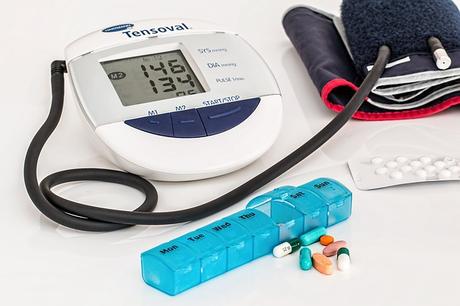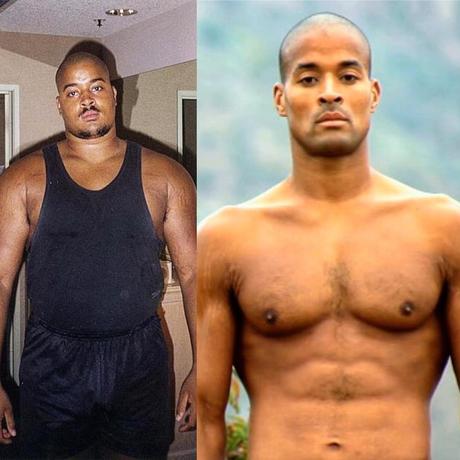You certainly can exercise if you have high blood pressure and in doing so, you can actually lower your blood pressure significantly. Especially when combined with a suitable diet full of whole foods and low in sugar.
Consult your doctor before increasing physical activity levels
Exercise & Blood Pressure
High blood pressure or hypertension means high pressure (tension) in the arteries. The arteries are the vessels that carry blood from the pumping heart to all of the tissues and organs of the body. High blood pressure does not mean excessive emotional tension, although emotional tension and stress can temporarily increase the blood pressure.
Normal blood pressure is below 120/80; blood pressure between 120/80 and 139/89 is called “pre-hypertension”, and a blood pressure of 140/90 or above is considered high blood pressure. The systolic blood pressure, which is the top number, represents the pressure in the arteries as the heart contracts and pumps blood into the arteries. The diastolic pressure, which is the bottom number, represents the pressure in the arteries as the heart relaxes after the contraction. The diastolic pressure, therefore, reflects the minimum pressure to which the arteries are exposed.
How is high blood pressure defined?
Since blood pressure can be affected by several factors, it is important to standardize the environment with this in mind when blood pressure is determined. For at least one hour before measuring the BP one should avoid eating, strenuous exercise (which can lower blood pressure), smoking, and caffeine intake. Other stresses may alter the blood pressure and need to be considered when blood pressure is measured.
Even though most insurance companies, quite reasonably, consider high blood pressure to be 140/90 and higher for the general population, these levels may not be appropriate cut-offs for all individuals.
As a matter of fact, many experts in the field of hypertension view blood pressure levels as a continuum, or range, from lower levels to higher levels. Such a continuum implies that there are no clear or precise cut-off values to separate normal blood pressure from high blood pressure. Individuals with so-called pre-hypertension (defined as a blood pressure between 120/80 and 139/89) may benefit from lowering of blood pressure by life style modification and possibly medication especially if there are other risk factors for end-organ damage such as diabetes or kidney disease (appropriate life style changes are discussed below).
For some people, blood pressure readings that are lower than 140/90 may be a more appropriate normal cut-off level. For example, in certain situations, such as in patients with long duration (chronic) kidney diseases that spill (lose) protein into the urine (proteinuria), the blood pressure is ideally kept at 130/80, or even lower. The purpose of reducing the blood pressure to this level in these patients is to slow the progression of kidney damage. Patients with diabetes (diabetes mellitus) may likewise benefit from blood pressure that is maintained at a level lower than 130/80. In addition, African Americans, who have an increased risk for developing the complications of hypertension, may decrease this risk by reducing their systolic blood pressure to less than 135 and the diastolic blood pressure to 80 mm Hg or less.
In line with the thinking that the risk of end-organ damage from high blood pressure represents a continuum, statistical analysis reveals that beginning at a blood pressure of 115/75 the risk of cardiovascular disease doubles with each increase in blood pressure of 20/10. This type of analysis has led to an ongoing “rethinking” in regard to who should be treated for hypertension, and what the goals of treatment should be.
Lowering your blood pressure – whether you have high blood pressure or not. Regular physical activity may help you to prevent heart disease and stroke by preventing or lowering high blood pressure.
Improve your blood cholesterol levels(?)
A controversial one – many health practioners now state that high cholesterol isn’t necessarily a risk factor in terms of health. The ketogenic diet for example, is based on high fat foods and has an increasing amount of scientific literature to support it.
A study carried out in 2006 for example, concluded that:
This study shows the beneficial effects of ketogenic diet following its long term administration in obese subjects with a high level of total cholesterol. Moreover, this study demonstrates that low carbohydrate diet is safe to use for a longer period of time in obese subjects with a high total cholesterol level and those with normocholesterolemia.
Click here to see study
It was previously thought that – Saturated fat (animal fat) increases cholesterol and in turn, this causes narrowing or furring of the arteries and increases the risk of a heart attack or stroke. There are two types of cholesterol – LDL (Low density lipoprotein) which settles in your arteries, narrows them and can block them and HDL (High density lipoprotein) which removes LDL cholesterol from arteries. Regular physical activity increases the amount of HDL (good) cholesterol in your body.
The type of diet that will lower your blood pressure, may actually depend on your genetics. Speak to your doctor or dietitian and consider getting a genetic test from the likes of 23 and me.
Read more about high fat diets in our blog post – are low carb diets healthy?
Losing Weight Can Help to Lower Blood Pressure
Exercise is important for health, in that it can help you to lose weight or help to maintain a healthy weight – being overweight is another cause of high blood pressure. By becoming more active and reducing the amount of energy (calories) that you eat you can lose weight.
Exercise can also help to control and prevent diabetes – if you have diabetes (type 1 or type 2) then being active can help you to reduce the number of tablets or the amount of insulin that you need to take. It can also reduce your risk of developing non-insulin dependent (Type 2) diabetes.
Most importantly, being active will help you to feel much better. It is those people who have been inactive, who then start to take regular, moderate, activity that benefit the most. You do not have to reach a certain level of activity before your body starts to benefit; even a little activity is better than none at all.
What does physical activity do to my blood pressure?
If you are regularly active and you maintain that activity in the long-term it can help you to lower your blood pressure. Most people will notice a reduction in their blood pressure within the first ten weeks after increasing the amount of activity they do. As long as you keep active your blood pressure should stay at this lower level.
Physical activity can lower systolic blood pressure by an average of 4 – 9mmHg.
Is it safe to be more active if I already have high blood pressure?
Almost everyone will be able to become more active. However, make sure you check the following before you start:
Have your blood pressure measured and check with your doctor or nurse that it is safe for you to start becoming more active. If your blood pressure is consistently above 180 systolic and/or 110 diastolic (180/110 mmHg), you should not be doing intensive activity until your blood pressure has been treated and lowered If you also have other medical conditions like diabetes, heart disease (such as a previous heart attack) or breathing problems you may need different advice. Check with your doctor.
You will generally be recommended to start low-intensity cardiovascular exercise such as walking. Avoiding resistance training is generally also a good idea, as in the short term, this can increase blood pressure greatly.
How much physical activity do I need to do to Lower Blood Pressure?
You are aiming to do at least 30 minutes of moderate physical activity at least five days a week. You should be a little out of breath but still able to talk, warm and slightly sweaty. This much activity will burn off 150 -180 calories a day, which could add up to a weight loss of 6-12kgs (13- 26lbs) every year. A little bit of activity regularly can make a real difference.
If you have not been active for a while then gradually build up the amount of time spent on activity, adding a few minutes each week. You can get as much benefit if you decide to do smaller amounts during the day to make up 30 minutes. For example, you could start with three ten-minute walks each day, increase to two fifteen-minute walks and then finally achieve a full 30 minutes in one go. Set yourself a series of goals to help you towards your final target.
If you are trying to lose weight, or have lost weight and are trying to maintain that weight loss, you may need to do 45-60 minutes of activity every day.
What kind of physical activity should I be doing to Lower Blood Pressure?
Brisk walking, swimming, cycling, jogging, playing a team sport such as football or hockey, dancing and tennis are all activities that will help you to strengthen you heart and lungs (cardiovascular system). It is this kind of actively that can help you to lower your blood pressure.
As well as these kinds of activities you should also include activity that strengthens your muscles and helps you to stay supple and flexible. These kinds of activities might include climbing stairs, walking uphill, yoga, pilates, and gardening. Doing a range of activities will stop you from getting bored and help to keep you motivated.
Some people use a pedometer, or step counter, and aim to do 10,000 steps every day. This can be a good way to set yourself goals and targets and helps you to become aware of how much (or how little) you are doing every day.
Is there any activity I should not do if I have high blood pressure?
Avoid lifting weights and very vigorous sports such as squash if you have high blood pressure. If you are very overweight, have a heart or breathing condition or have not been active for a long time, check with your doctor before starting a new exercise routine.
What if my Client or Gym Member has Blood Pressure?
Information for Personal Trainers & Fitness Instructors:
Everyone seems to have it, but what exactly is high blood pressure?
Blood pressure is the force in the arteries when the heart beats (systolic pressure) and when the heart is at rest (diastolic pressure). It’s measured in millimeters of mercury (mm Hg). High blood pressure (or hypertension) is defined in an adult as a blood pressure greater than or equal to 140 mm Hg systolic pressure or greater than or equal to 90 mm Hg diastolic pressure. High blood pressure directly increases the risk of coronary heart disease (which leads to heart attack) and stroke, especially when it’s present with other risk factors.
Classifying Blood Pressure
- Less than 130 (systolic) and Less than 85 (diastolic) Normal blood pressure
- 130-139 or 85-89 High-normal blood pressure
- 140-159 or 90-99 Stage 1 (mild) hypertension
- 160-179 or 100-109 Stage 2 (moderate) hypertension
- 180-209 or 110-119 Stage 3 (severe) hypertension
- 210 or higher or 120 or higher Stage 4 (very severe) hypertension
——————————————————————————–
One of the central and most specialized roles of a fitness instructor, is that of exercise prescription. Individual clients will have specific goals and needs that must be catered for in order to design the optimal programme of exercise. In spite of this specificity, most individuals can be categorized into one of a number of general populations. A number of medical considerations will have to be taken into account or even be central to programme design; one of the most common will no doubt be hypertension.
Hypertension is present in epidemic proportions within industrialized societies and is linked to many cardiovascular pathologies. There remains much debate over the merits of aggressive pharmological therapy in the treatment of individuals with mild to moderate elevations in blood pressure. There is however, no such debate over the efficacy of aerobic exercise as a treatment.
Research suggests that aerobic/endurance exercise is most beneficial for hypertensive populations. Endurance exercise training will elicit an average reduction of 10mmhg for both systolic and diastolic blood pressures in individuals with mild hypertension (ACSM, 2000). As a fitness instructor the mode, frequency, duration and intensity of exercise need to be evaluated.
It is recommended by the ACSM that endurance training at 50-85% of maximum oxygen uptake is undertaken for 20-60 minutes 3-5 days per week. It should also be emphasised to the client that physically active and aerobically fit hypertensive individuals have markedly reduced mortality rates in comparison to there sedentary hypertensive peers. This is due to the fact that endurance exercise has a beneficial effect upon the cardiovascular system that interacts with other CVD risk factors.
The danger that is associated with the adoption of an exercise programme, is the higher blood pressure induced by exercise. It is thought that hypertensive individuals are at greater risk of sudden cardiac death. Although there is limited evidence to support this notion, it remains prudent to recommend lower intensity exercise (<85% max oxygen uptake). Resistance training can still be prescribed, but high repetitions should be prescribed and perhaps a circuit of exercises should be encouraged rather than a standard sets and repetitions protocol.
Another consideration is the interaction between exercise and medication. Although most anti hypertensive drugs will generally reduce the absolute level of blood pressure that is experienced during exercise and also the heart rate response. This is a crucial consideration when setting the intensity of exercise on different exercise equipment. Beta blockers are thought to reduce absolute exercise tolerance and the exercise induced rise in HDL cholesterol. It is therefore suggested that angiotensin-converting enzyme inhibitors. Calcium channel blockers, and alpha-blockers are especially well suited for persons with uncomplicated essential hypertension and physically active lifestyles.
The adoption of a physically active lifestyle is itself something that must be emphasised and promoted. Research that have investigated the effect of exercise on blood pressure and stop training, indicate that their blood pressure returns to initial pre-exercise values following a sustained period of detraining. The blood pressure lowering effect of exercise training is evident only as long as a regular training programme is maintained. This should be outlined to clients, once a regular pattern of physical activity had been adopted.
Other important considerations for hypertensive individuals, as mentioned earlier, is the possibility that endurance exercise training may elicit other health benefits in addition to lowering of blood pressure. The incidence of other modifiable CAD risk factors, including obesity, abnormal lipid profiles, insulin resistance, and glucose intolerance, is also more prevalent in hypertensive individuals.
Endurance exercise training, in addition to reducing blood pressure in hypertensive individuals, also improves glucose intolerance and insulin resistance, obesity and caloric balance and lipid profiles in relatively healthy individuals.
Hopefully the previous information has given a brief overview of exercise and hypertension and in addition to a knowledge of exercise types and programme design, should provide enough information to construct exercise programmes that provide major physical and mental health benefits to your clients. The following is a brief summary of the special considerations that you may wish to take into consideration during the construction of a programme of exercise for an individual with hypertension:
· The type, frequency and duration of activity are important. People with hypertension should exercise daily for 30 minutes or more at a moderate level to gain health benefits.
· People using medications, such as beta-blockers, should be cautious of developing heat illness when exercising. These medications and diuretics impair the ability to regulate body temperature.
· Adults with hypertension should extend the cool-down period of the workout. Antihypertensives, such as alpha blockers, calcium channel blockers, and vasodilators may cause BP to lower too much after abruptly ending exercise.
· Overweight and obese adults with hypertension should combine regular exercise and weight loss to effectively lower resting BP.
· Promoting the BP-lowering effects of single exercise sessions may best motivate people to exercise. Physicians are encouraged to promote the role of exercise in controlling BP to their patients.
· A physician evaluation and clearance is necessary for those with severe or uncontrolled BP prior to beginning an exercise program. Higher risk patients (such as those with coronary artery disease or chronic heart failure) should lessen the intensity of their training program.
In addition to exercise prescription however, it would be thoughtful to provide a client with additional lifestyle guidelines.
Perhaps an information sheet containing the following points would be prudent:
- Maintain a healthy weight.
- Exercise on a regular basis.
- Reduce sodium to 2.3 grams or less each day.
- Avoid appetite suppressants, decongestants, and nonsteroidal anti-inflammatory medications.
- Reduce stress by learning relaxation techniques.
- Reduce dietary fat and cholesterol.
- Limit alcohol consumption to less than one ounce daily.
- Stop smoking.
Motivation is key in the fitness industry, and information such as that contained within this article is essential for reinforcing any desire a client or potential client has to adopt an exercise programme.
In addition, if staff appear knowledgeable and caring it will further reinforce the incentive to exercise.



